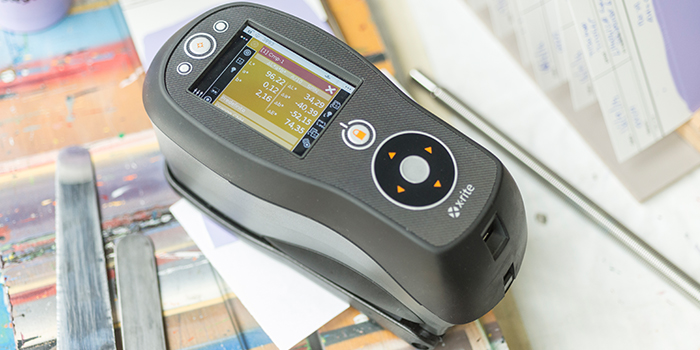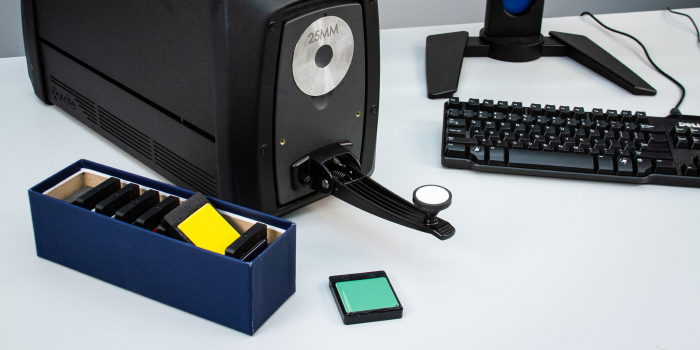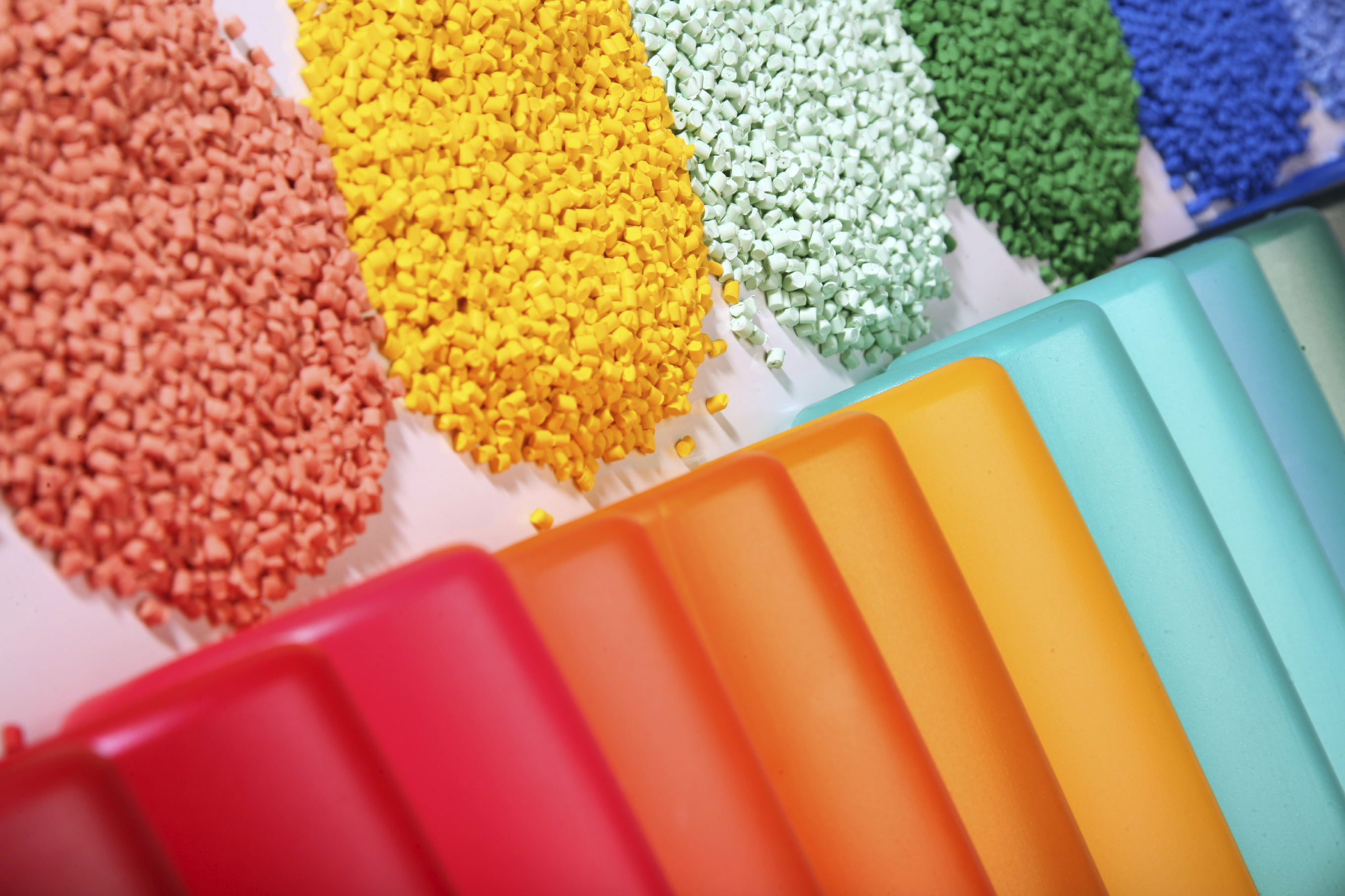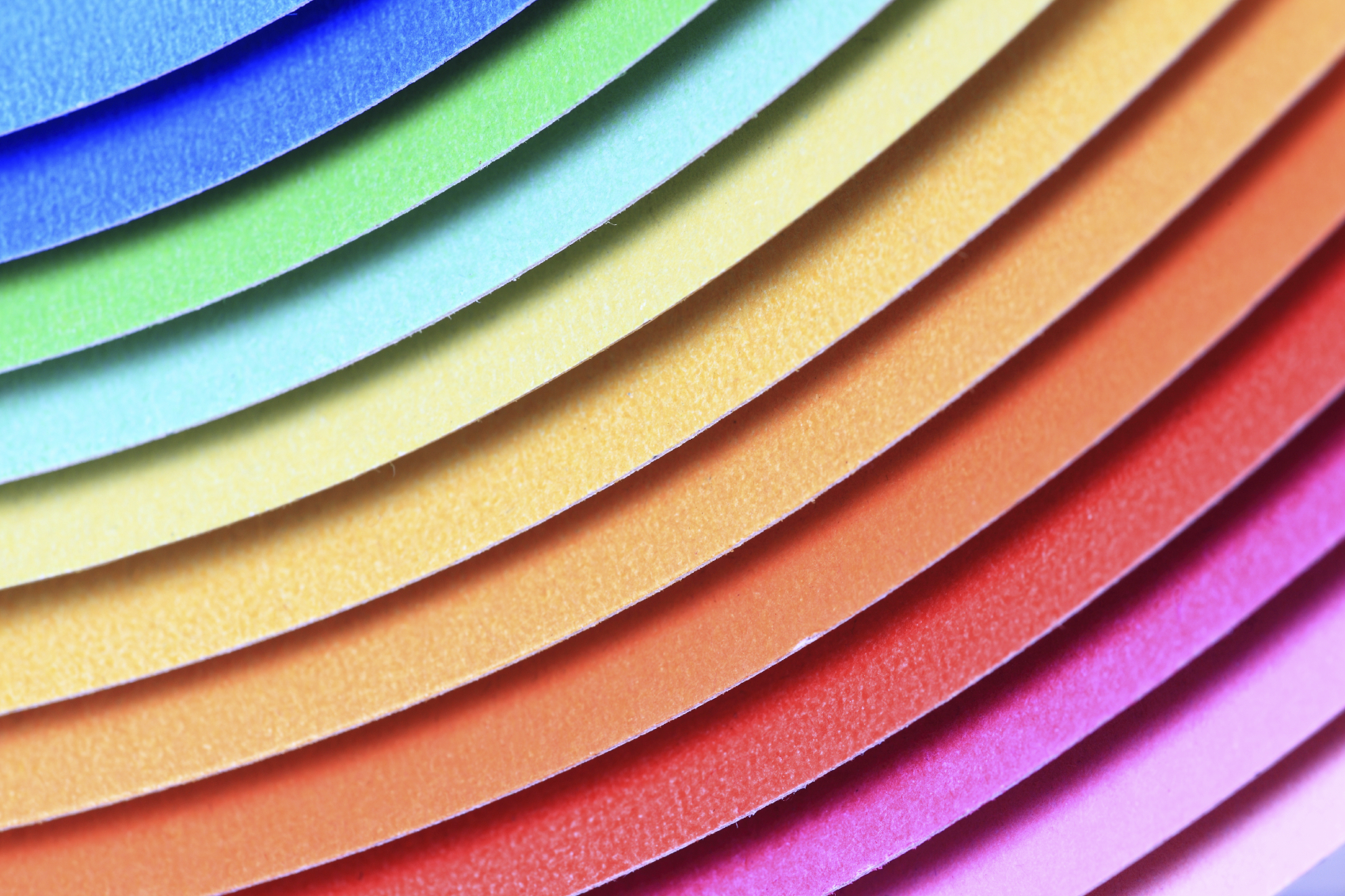Are your measurement readings different than your supplier’s? If so, you’re not alone.
It’s an important issue you must correct. If your measurements don’t match those of your suppliers, you might be rejecting materials you shouldn’t be, NOT rejecting materials you SHOULD be, and wasting a lot of time, effort, and money producing the wrong color.
We’ve compiled the 5 most common reasons specifier and supplier measurements don’t match so you can troubleshoot and correct inconsistencies in your color workflow.
1. Different Devices
If you and your supplier are measuring color using different devices, of course there will be some variation in the measured results. Different manufacturers, different models, even old devices versus new devices, can cause incongruity. Think of it like two computers. Even if you’re using the same operating system, you expect them to work a little differently. Running repeatability and reproducibility studies on your instruments can tell you if your instruments are capable of producing consistent results and help set clear expectations.
Mismatched device geometry, such as using a sphere geometry benchtop versus a 45:0 geometry handheld, can also cause discrepancies. Sometimes you can reduce these variations by using the same aperture size. You can also check to see if there is a transform available to make the devices read more closely together. For example, we offer a paint transform on the Ci64 handheld device that enables it to read paint samples more like an Ci7000 series benchtop.

Reading paint samples with a Ci64.
The ideal situation is for everyone in the supply chain to use the same type of device. Check out our Understanding Inter-Instrument Agreement blog to learn what inter-instrument agreement means, how it’s different from other terms like inter-modal agreement and repeatability, and why it’s something you really need to consider in your color workflow.
2. Inadequate Device Maintenance
Even if you and your supplier are using the same instruments, they all need to be in tip-top condition to provide accurate and consistent results. Think of your color measurement device like a camera. Would you expect to take a clear picture if the lens is dirty or smudged?
You also need to calibrate regularly to bring your device back to original factory settings. We recommend calibrating each time you start a shift, and at least once a day. The longer you go without calibrating, the farther your instrument will be from a normalized or calibrated state.
Even the best spectrophotometers can experience occasional drift, causing uncertainty and color measurement errors. Performing regular maintenance and obtaining factory certification is the ultimate proof that your instrument is reading and performing the way it should. Using NetProfiler, a cloud-based blend of software and color standards, makes it easy to adjust and validate instrument performance, identify instruments in need of service, and reduce variation between devices.

Of course, clean, calibrated, certified devices will only provide consistent results if your supplier is following the same maintenance routine. Don’t be afraid to ask for their spectrophotometer maintenance plan, especially if you’re having trouble with mismatched measurement data.
3. Different Standards
Another cause for error is using different working standards. You and your supplier should have agreed-upon standards that clearly reflect a desired outcome that is both acceptable and achievable. It is important to consider both criteria.
Physical Standards
You also need to be sure you’re measuring standards the same way. For instance, if your plastics supplier measures pellets in a pellet holder but you’re doing a quick melt process and measuring the plaque, you’re going to get very different results.
Although physical standards are a common way to communicate color in many industries like textiles, print, automotive, paints, food, chemicals, packaging, and plastics, here are a few things to keep in mind.
- Physical color standards are affected by a variety of factors, such as light, heat, age, and other ambient variables. It is important to store standards correctly. Follow our Ultimate Guide for Caring for Physical Samples, and be sure to share it with your supplier!
- The appearance of color can change based on the material. In fact, some colors are not even achievable on a certain material. The standard should accurately represent the product color and material, as well as surface texture, gloss, angular dependency attributes, colorants, inks, pigments, etc.
- Using a light booth can verify the produced color continues to match the standard under different light sources.
Digital Standards
Digital color standards provide spectral color values to ensure everyone is aiming at the same target. PantoneLIVE makes it easy for brands and manufacturers to adopt digital standards across a global supply chain and provide those digital standards to everyone involved in the color workflow.
4. Human Error
Especially in larger operations, human error is one of the biggest causes of mismatched measurements. Looking at your processes and drafting clear and concise Standard Operating Procedures (SOPs) is one of the best defenses against bad data and will increase repeatability and reproducibility in your workflow.
5. Miscommunication
If everything so far checks out, your issue is probably miscommunication between you and your supplier. Only by communicating properly about all settings and potential limitations can you fully understand how they will impact your measurements and data outcomes.
For example, if you’re a plastic molder and order one ton of plastic pellets, the last thing you want to do is reject the shipment when it arrives because the color isn’t right. Not only is a huge material loss for the manufacturer, but it also hurts your business because you must wait to fill your production orders.
It’s much harder to work backwards than to set clear color measurement expectations from the beginning. Here’s what you need to discuss up front:
- Instrument model
- Instrument geometry
- Aperture size
- Device settings, including illuminant, observer and illuminant table setting (Table 5 or Table 6 are certified by the CIE for use by colorometric readings)
- Standard backing (less than 100% opaque materials need standard backing!)
- Calibration schedule
- Factory maintenance and certification
There is hope!
To ensure that measurement accuracy is not left to chance, talk through these five topics with your supplier. Coming to agreement will save you BOTH time and money in the long run.
If you still can’t find the cause of your inconsistent measurements, get in touch. We offer audit and consulting services to help you identify issues and find the best solutions for your industry, workflow, and needs.

